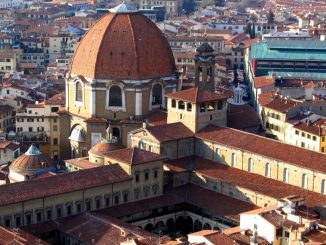Within a relatively short period of time after Auschwitz-Birkenau was liberated in 1945, people were coming to see for themselves the horrors that happened here. Almost everything in Auschwitz I and Auschwitz-Birkenau is on show – such as the gas chambers, crematoria and huts that the inmates lived in. A tour lasts about an hour and a half, and is available in 15 languages. General unguided entry is free. The theatre shows a 15 minute documentary on the liberation of Auschwitz-Birkenau, which now is a museum honouring all who suffered or died during the Holocaust.
Since the 13th century people having been gathering in Main Square (Rynek Glowny), first to sell their wares and now to socialise. The Adam Mickiewicz Monument is a useful base from which to orientate yourself for some exploration. Here there are many restaurants and cafes where you can eat or drink al fresco and watch the world go by. It is also where you can hire a horse and carriage for a few hours to see a different perspective of the capital. The buskers are always very entertaining. However, infinitely larger entertainment events such as the International Parade of Dragons, Great Orchestra of Christmas Charity and New Year’s Eve party are also held here.
It may look vaguely like a castle, but in the 1500s the Barbakan was the principal look out for the city. It and the City Walls ensured that the capital was impenetrable. There were no windows; rather, narrow loopholes through which one could just about look out but not look in, making the light extremely dim and the atmosphere very claustrophobic inside. Apart from its purely practical function to begin with, it now is a shining example of Gothic craftsmanship and a prime Krakow landmark. It also divides Krakow’s Historical Museum and the courtyard, in which many events are held. It is also where you can attend knights’ tournaments, sword fights and an annual fencing tournament. The 6 zloty ticket will allow one to see both the Barbakan and the Krakow City Walls.
Ask people in Krakow what building they associate with the city and most will probably say the Mariacki Basilica, which dates back to the Middle Ages and is the largest in the capital. Walk inside and you will be blown away by its magnificence. The first feature you will notice is the 15th century altarpiece – the largest Gothic example in the world. However, to fully appreciate all that this church has to offer, you must walk around and explore – a priority is to climb the 239 steps up to the tower to take in the views over Krakow, if you have a head for heights. The Gothic christening font and the beautiful stained glass are also reasons in themselves to visit.
When in the city centre, you will quickly become accustomed to the bugle call (known as the heynal or hejnal) that has announced the hour, every hour to the north (the King), west (the Town Hall Tower), south (St. Florian’s Gate and the Barbakan) and east (the Little Market Square). It was first documented in the 1300s but it is impossible to know how far this tradition goes back, or who composed the tune. In any case, it has come to be symbolic of Krakow and is played live from the highest tower of St. Mary’s Church.




